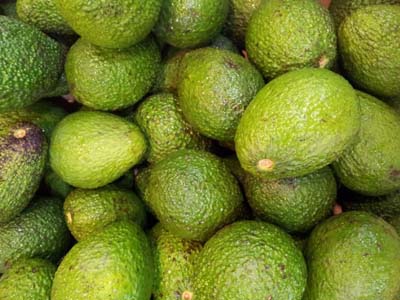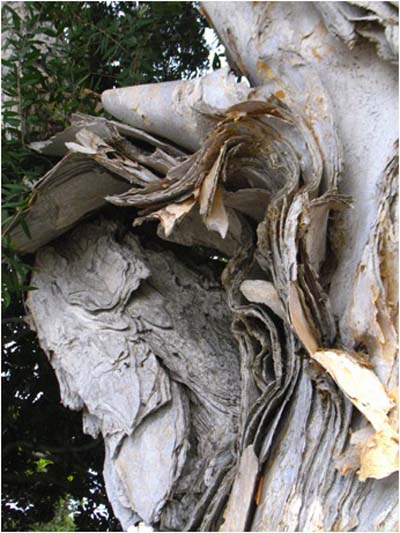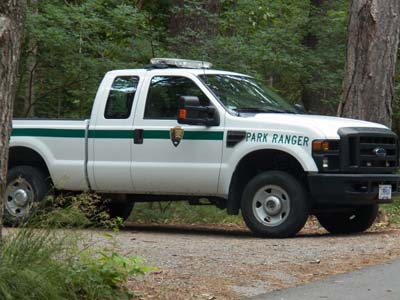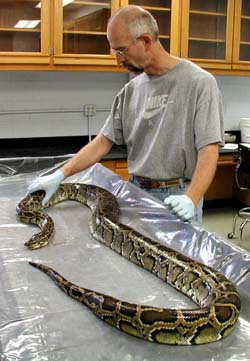
Everglades fights invasive species
The current Everglades National Park contains 20 percent of the land of the original Everglades region, which is experiencing an onslaught by invasive species.
Maintaining the native variety of plants, trees, birds and fish has become difficult because of an incredible increase the number of exotic species in the park. Of all the species in the Everglades, 26 percent are considered exotic.
Dan Kimball, superintendent of Everglades National Park, is in charge of overall management responsibilities for the park including resource preservation and restoration. Over the phone, Kimball said he had high hopes for the Everglades.
| Click on the video at the right to view an audio slideshow about invasive species in the Everglades area narrated and prepared by writer Adam Hendel. |
“We spend a lot of time in Everglades restoration, getting the water and plumbing right, and only in recent years have we been tackling invasive species issues,” said Kimball.
To change the course of the invasion, there have been implementations of several screens for prevention of exotic species arrival.
Transporting exotic plants into Florida poses a huge threat to our agricultural resources and the biosphere.
Eric Urcshaun, a supervisor for the Florida Department of Agriculture, is an active researcher for the Cooperative Agricultural Pest Survey. This is a state and federal system to detect invasive invertebrate species early on. Urschaun works rigorously to help weed out the unwanted pests.
“First we try to figure out where the pests are going to arrive, how they are going to arrive and then we monitor those areas. We also try to put in action plans for when some of them eventually do arrive, we hope to have a plan in place to try and eliminate them,” Urcshaun said.
| The avocado industry in under threat due to the laurel wilt fungi carried by red bay beetles (Photo courtesy of Teodoro S. Gruhl on publicdomainpictures.net). |  |
His job also entails communicating with overseas pest control comities to send and receive data of invasive species and shared strategies.
The preventive screening of invasive pests is broken down into three different departments on arrival in the U.S.
“The first line of defense takes place in customs and border protection. They are the folks catching things as they come in. Next is the USDA (U.S. Department of Agriculture) inspection staff who observes these commodities before they are released to the public. We also have the FDA (Florida Department of Agriculture) inspectors as third line of defense,” Urcshaun said.
Kimball explained that, due to the Lacey Act, the process isn’t as effective as one would hope and believes that the subjects should be closely more evaluated. The Lacey Act is an outdated policy, which only rejects 25 species upon arrival into the U.S.
Americans and visitors bring a lot of things through South Florida and it is a flawed system currently due to the Lacey Act.
“There are better proposals for a more effective screen and we don’t analyze species enough. Right now we bring species in and don’t check to see their problems until it’s too late,” said Kimball.
Many of the issues in the Everglades National Park have risen because of the carelessness of boarder protection upon arrival in the United States like the red bay beetle.
 |
Melaleuca is a dangerous invasive species, but is being successfully attacked using biocontrol (Photo courtesy of Andrew Schmitt on publicdomainpictures.net). |
“The red bay ambrosia beetle likes to feed on red bay trees here in Florida. The trees are extremely susceptible to a fungus carried by the beetle called laurel wilt. Upwards of 98 percent of red bay trees have died,” Urschaun explained.
This is much like Dutch elm disease spread from last decade, the fungi carried by beetles has caused almost complete extinction of a valuable native species, Persea Borbonia.
“A close cousin of the red bay tree is Persea Americana, the American avocado. Now people realized that this is more than just a problem,” said Urcshaun.
The recently bloomed avocado industry in Florida will not continue to flourish in the near future. The more beetles spreading the fungi will wilt the avocado trees. Solving the problem to terminate these invasive beetles to save the avocado system in Florida seems out of the question.
Humans support spread of invasive species in more than careless plant trafficking, but also by releasing pets into the wild. Amnesty Day is an event held by the Florida Fish and Wildlife Conservation Commission where pet owners can turn over their unwanted animals no matter how exotic it may be.
However, many have let snakes and reptiles loose, which greatly disturbs the food chains.
Liz Baraco, an Amnesty Day sponsor and member of the FWCC, believes the Burmese python is one of the main targeted species threatening Everglades National Park.
| A park ranger patrols Everglades National Park (Photo courtesy of Junior Libby on publicdomainpictures.net). |  |
“The reason we don’t see smaller mammals in the park such as raccoons, possums, and rodents. They are pretty much gone. There were a lot of theories going around discussing the low resources. Scientists in the park last December determined that the python was the cause of low populations of mammals in the park,” said Baraco.
Preventative measures are more effective than trying to control these species after invasion already occurs. The Burmese python is now legally hunted and hunting is encouraged, but for the red bay ambrosia beetle and many others, a solution is far away.
“The red bay beetle has killed a lot of trees and there is no sign of stopping it. There is an opportunity to work with the FDA around the park because it affects the avocado, but still it take a lot of money and research to fund the research,” said Kimball.
“If we are going to tackle invasive species we need to do it at the preventative phase. Invasion curve too expensive and difficult so preventative measures are more effective,” Baraco said. The amount of money that invasive species have cost in research and prevention is near $500 million by the U.S. Fish and Wildlife Service, but still more than 1.7 million acres remain infested.
The national park has had some successful species management and correction in the vegetation department.
“Major threatening plant species are the Brazilian pepper, melaleuca and the old world climbing fern,” said Kimball.
According to Kimball, there are not many effective strategies to getting rid of these invasive plants, but mentioned a method of biocontrol, which is the introduction of a species to reduce another.
 |
Researchers inspect large Burmese python to determine their effects upon the ecosystem (Photo courtesy of Peter Griffin, amateur photographer on publicdomainpictures.net). |
“We have found a moth that we can release to kill melaleuca, but we fear introducing biocontrol on a full scale,” said Kimball.
There are many risks involved in the process and negative outcomes may result unexpectedly.
The idea of introducing more exotic species posses threat to Kimball who is unwilling to take action without a thorough and well organized plan of attack.
“The FDA is working hard to find new solutions, but there are few effective agents right now. In the past we have implemented species for biocontrol and they ended up having adverse affect some other important populations,” said Kimball.
Regarding the future, It is doubtful that we will ever be able to see a native Everglades. Only in an ideal world will the amount of invasive species plateau soon, but Kimball is optimistic that a change can be made for the park.
“I don’t think we will ever get the Glades back to the way it was. But there is a lot of visibility of native species. While we are restoring the plumbing we also need to focus on these exotic species. I’m cautiously optimistic, but it’s risky when you are dealing with behaviors such as pet release. So it’s a huge challenge and we are doing everything we can to turn it back,” said Kimball.

Comments are Closed